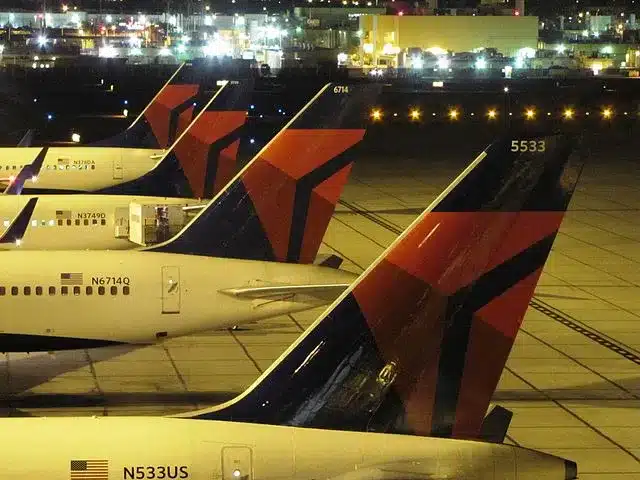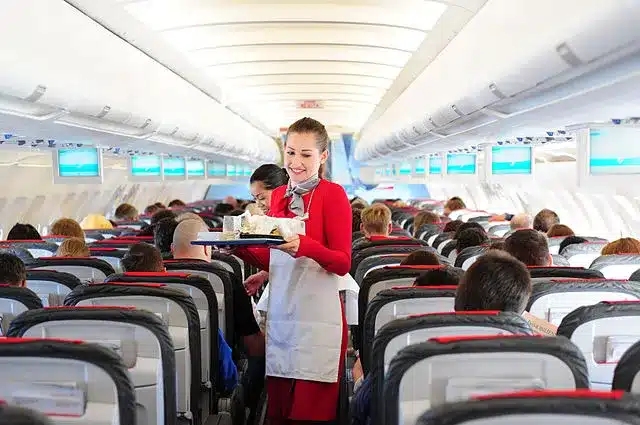Want to explain How Airplanes Fly to others? Of course you do...
The Wright brothers’ first flight. Bernoulli’s Principle. And Air Transat flight 236 are all valuable lessons in how Airplanes fly.
Airplanes fly every day. You travel on one regularly and even know lots of pilots or flight attendants. But How Airplanes fly, or the Theory of Flight, can be tricky to grasp. But it’s cool as hell when you can share the knowledge.
How to explain how Airplanes Fly. In under 5 minutes. With a Balloon.
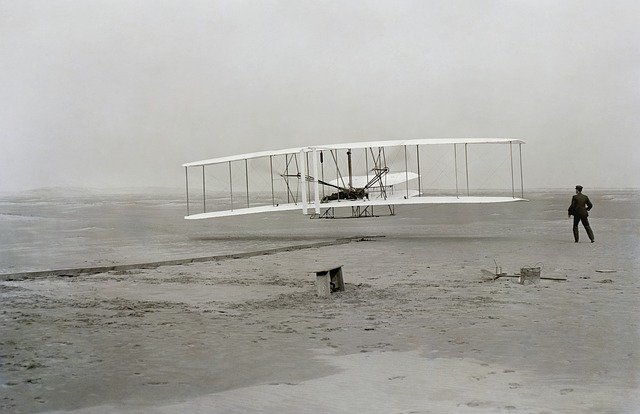
The Plane Wing Party Trick
You’ve heard of Lift, Drag, Thrust, and other airplane’y type stuff. And you kind of “get” how this sleek, jet-powered hunk of metal can speed through the air and stay up there. Even if men did design it. But just like in the Matrix – there’s something you’re just not sure of. There’s got to be some secret plane sauce. There is.
What did Orville and Wilbur figure out that others couldn’t? Here, my friends, is your very own red (arrows) pill.
Done with speed.
How Airplanes Fly - Lift
We want to do something different. We want to help you – help others. This is a companion piece to our “Fear of flying is not a fear of flying” post, where we help those, whose fear is from a lack of understanding of stress responses and not a fear of flight itself.
We want to teach you how to “lift” others (cough!). So that we spread the good word. And you can look cool and interesting.
“Do I need anything for this plane Journey, Patrick?”
Yes you do.
A child’s latex BALLOON. Just don’t blow it up!. Not yet.
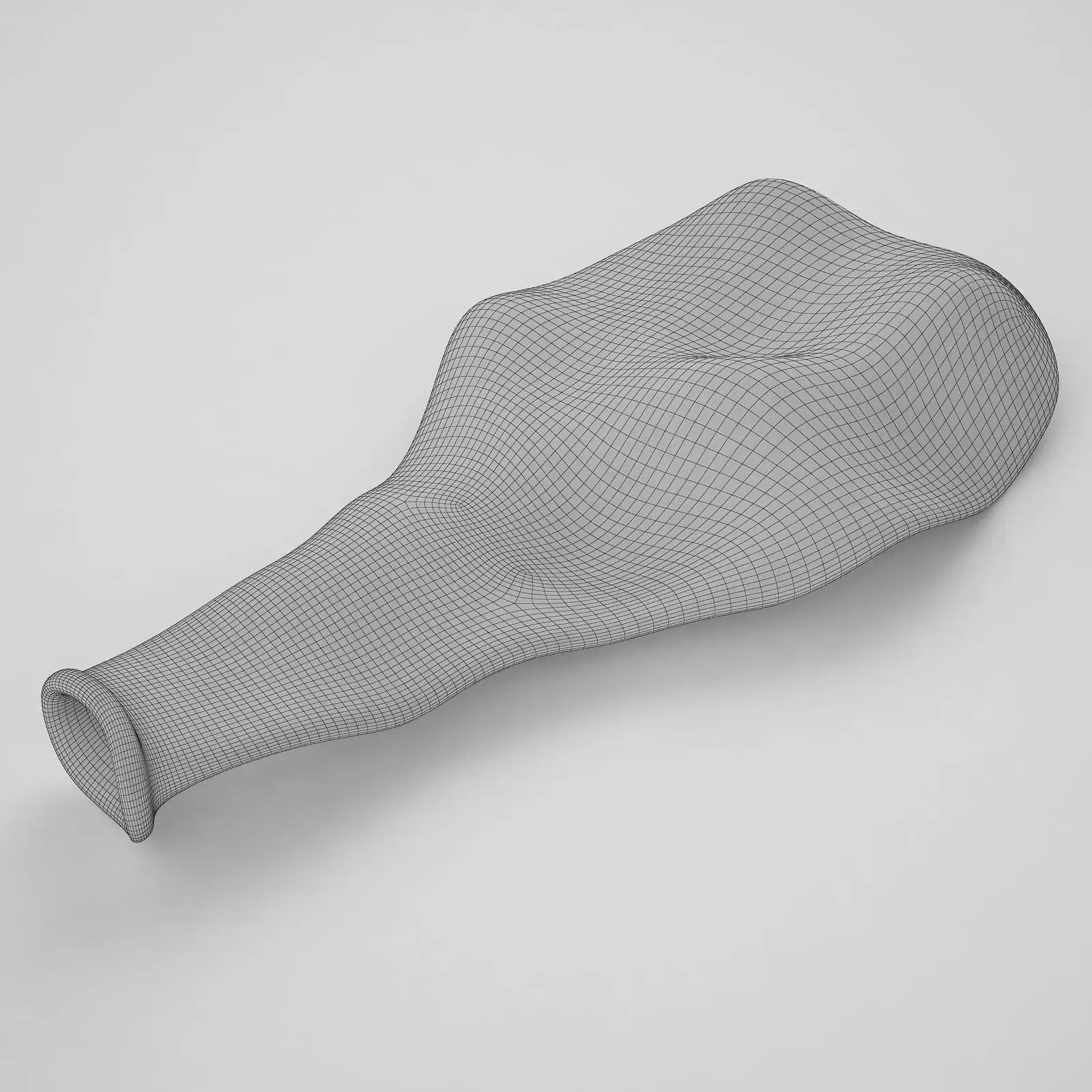
Air Transat Flight 236 and Real Pressure
If you’ve read our articles, you’ll know how we like to set the scene. It adds context and gives you real-world examples so the aha moment makes it that bit more powerful. You should start slow and build to a big finish for best results. So, my married friends tell me.
Anyhoo…it’s August 2001 and a perfectly fine Airbus A330 plane is cruising across the Atlantic from Toronto to Lisbon with 306 people on board. The details of this incident, like everything in this world, are available for research on Wikipedia. And as always, we invite you to educate yourself on all the facts of the incident.
But if you’re like me, you’re far too busy with no time for humorless detail. But this little-known incident does hold an aviation world record to this day, which makes it a wonderful place to start our story of lift.
You see, this aircraft had recently undergone maintenance and a fuel line had been fractured. Flight AT236 had unknowingly been leaking all its fuel since they left Canada. And somewhere around the middle of the Atlantic the crew was about to find out that the remaining supply was nowhere near enough to get to their closest airfield. The Azores.
But Captain Piche – like all good pilots – knew something you will soon understand. And so, he climbed up as high as he could and as his final Rolls Royce jet engine flamed out, he glided.
Yes, GLIDED.
For 15 minutes and over 121 kilometers.

Glide Ratio and Drag
Imagine that. Tens of tons of metal, engines like anchors, passengers, bags, cargo but most importantly two pet cats, flying without any forward force of motion. But dammit if that Airbus-that-could didn’t plant its wheels on that Azores runway like a smooth Celine Dion ballad.
You see it’s all in the WINGS. And while Flight AT236 was no longer being propelled forward – the wings generated enough “lift” to allow the crew to control their descent. This is called the Glide Ratio and it’s around 10:1 for the A330. That means for every mile it dropped, it can glide 10 miles forward. But there’s a high degree of variance depending on wind, temperature, and other factors. This is why de-icing the wings is so important.
Just imagine the size of the whiskey Captain Piche had when he reached his hotel room mini-bar.
How Airplanes Fly - Balloon Speed
Now it’s time to take your balloon. Put it to your lips. And blow. How full? That’s up to you – enough to create tension. Now hold it out in front of you with the top pinched and the other hand holding the balloon. (Note: Don’t let it go flying off like a rocket- – that comes later for dramatic effect!).
Gently release the top and watch what happens. What should happen is amazing, the air will rush back out of the balloon to be with its other air molecule friends in our atmosphere. This is where you turn to your confused partner, child, or celebrity friend and say “that, Celine, is how aircraft fly!”.
And you will be 100% correct. And they will look at you like your spouse does when you explain anything.
Bernoulli’s Principle and Wing Surface
So, what just happened? A law of physics dictates that when you create an area of high pressure (say forcing air into a balloon and holding it there) that when you release that air, it quickly rushes back into the area of lower air pressure (outside the balloon) so that normal “equal pressure” is restored. Makes sense too, right? You have taken the air from its normal condition and compressed it. This is exactly what a wing does.
It is designed so that it creates that very same effect between the upper side of the airplane wing and the underside. Imagine that same balloon that you hold in your hand but place it under a piece of paper. What would happen to the paper?
It would be pushed upwards by the force of the air as it left the balloon. The wing of the aircraft is designed to do the same thing. As it flies through the atmosphere, the distance the air molecules travel above the wing is longer than the distance they travel under the wing.
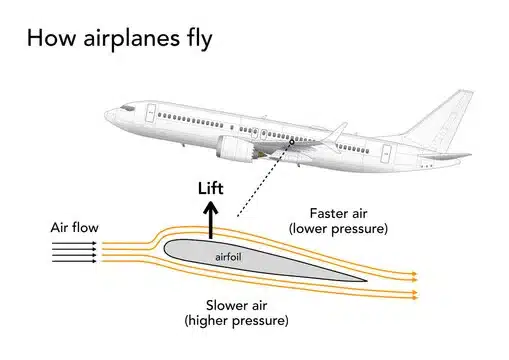
How Airplanes Fly - Wing it
You now have a higher density of air below the wing than the curved surface above it. And just like the balloon, those higher-density air molecules underneath the wing PUSH toward the lower density space on the leading edge of the wing. This flow of air excerpts power underneath the wing as they attempt to do just that. This creates “lift”.
Like hundreds of thousands of hand-held balloons every micro-second pushing up on the wing. And that, Celine, is what the Wright brothers discovered. Well, a couple of other guys figured it out before them, but I don’t want any trouble from those folks at the Smithsonian so I will leave it there. Only to say that what Orville and Wilbur did do was to design a way for their aircraft to utilize this principle but also control it.
They were able to warp their wings in such a way that control of the flight could be maintained to such a degree that modern aviation was indeed born. Their skills of controlling bicycles and piano wire helped in the History of flight.
So how do Airplanes fly inverted?
This is a question you might hear from some people on your plane journey. Planes come in all shapes and sizes and are composed of a variety of materials and propelled by all kinds of powerplants. Yes, some aircraft can perform inverted flight. An F-18 can fly upside down, but if you have engines generating 35k pounds of thrust then I would argue that they would create lift so an 18-wheeler might fly.
Modern commercial aircraft are designed to do one thing – fly at a constant cruise speed at altitude. And the aircraft wings are how it does that. With speed from the engines and light materials. Unless you were on Air Transat 236, where it wasn’t. Except with the phenomena of lift, it did. So, spare a thought for the crew of AT236 and imagine the look on the pilot’s faces right when they figured out the predicament, they were in.
Captain Sully, rightfully, gets a lot of credit for the miracle on the Hudson. But we need to tip our symmetrical winged cap to Captain Piche for this one. We tried to find out what he said in the announcement to the passengers to tell them they were out of fuel, but we can imagine it was the hardest PA call he ever made.


